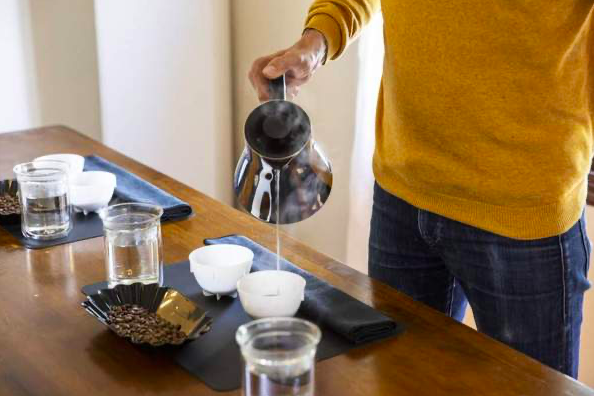CUPPING
I think we all agree now that the world of specialty coffee can and is filled with complexity, especially when achieving optimal results of excellent taste that include acidity, sweetness, aftertaste and balance. There is a universal standard method known as cupping that is used for assessing and scoring the coffee. This method is essential for green coffee buyers when deciding which coffee will be purchased. For roasters, the cupping method is used in order to turn the roasted profile to ensure that coffee develops properly. Quality control professionals use cupping to ensure that every coffee that comes from the roaster, to cafes, coffee shops and to buy online tastes excellent without any flaws. Last but not least, for baristas, this means expanding the floor, getting to know different backgrounds, or even competing at the national level to win the title of cup champion.
This method of cupping don't have to be, of course, done only by professionals and you can easily learn how to do cupping at home.
You will need: coffee(s) - 20 grams of each coffee, grinder, scale (for measuring coffee weight), timer, cupping bowls (160-200ml), cups filled with hot water, spoons, hot water element, vessel, mug or glass
As a first step, grind two grams of the first coffee to prime the grindes, then continue in grinding the remaining 18 grams of coffee. After grinding the coffee beans to a coarse setting, it should look similar to coarse sea salt. After this, put each coffee sample of 9 grams into cupping bowls and then heat the water up to 93 degrees of Celsius. Into each bowl, pour 150 grams of water and start the times. After 4 minutes, you should begin to break the crust by uing the spoon to push the coffee grounds to the back of the bowl. By using two spoons, you can remove the remaining coffee grounds and foam and dump into the spent coffee grounds bowl. After 13-15 minutes when the coffee is cool, you can start tasting the coffee. When the coffee cools, you are able to taste different and a wider range in flavor. (Wang, 2019)
In order to taste the differences between roasts, origins and flavors of coffee, you have to develop a more refined coffee palate. According to definition, coffee palate is the roof of the mouth, separating the cavities of the nose and the mouth in vertebrates. (Roasty Coffee, n.d.)
Coffee Tasters's Flavour Wheel by the Specialty Coffee Association of America (SCAA) has been used by professionals as an industry standard since 1995. The illustrative coffee wheel is described with a comprehensive list of terms of specialty coffee. The Wheel has been updated in 2016 by dozens of sensory scientists at the Sensory Analysis Centre. So far it is one of the most comprehensive researches about coffee flavor. It is a great tool for coffee drinks who tries to discern good coffee from the bad one. (Prima Donna Life, 2018)
Reference list:
Prima Donna Life (2018) Available at: https://theprimadonnalife.com/coffee/coffee-101/what-does-your-coffee-taste-like/ (Accessed: 2 January 2021).
Roasty Coffee (n.d.) Available at: https://www.roastycoffee.com/taste-coffee/ (Accessed: 31 December 2020).
Wang, E. (2019) Fellow. Available at: https://fellowproducts.com/blogs/learn/a-step-by-step-guide-to-cupping-coffee (Accessed: 31 December 2020).




Komentáře
Okomentovat